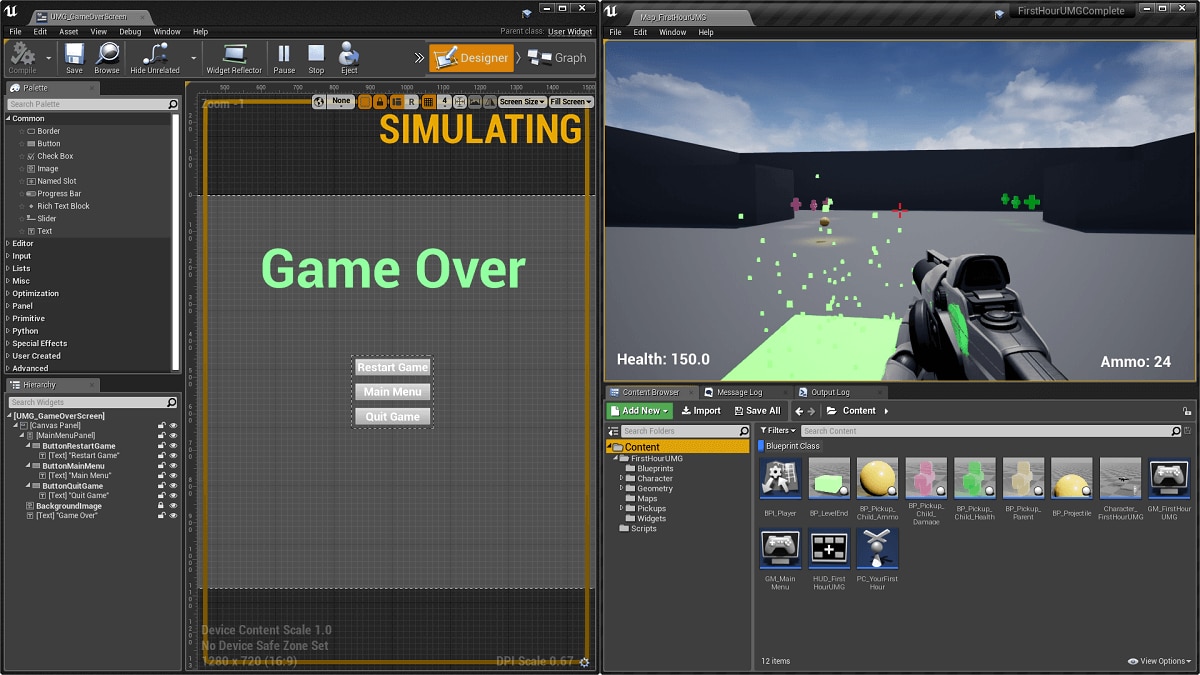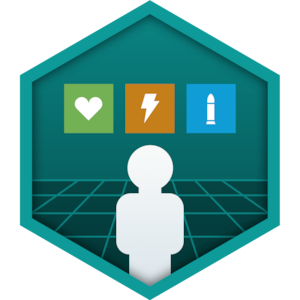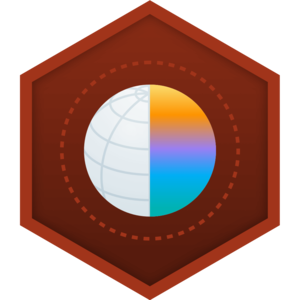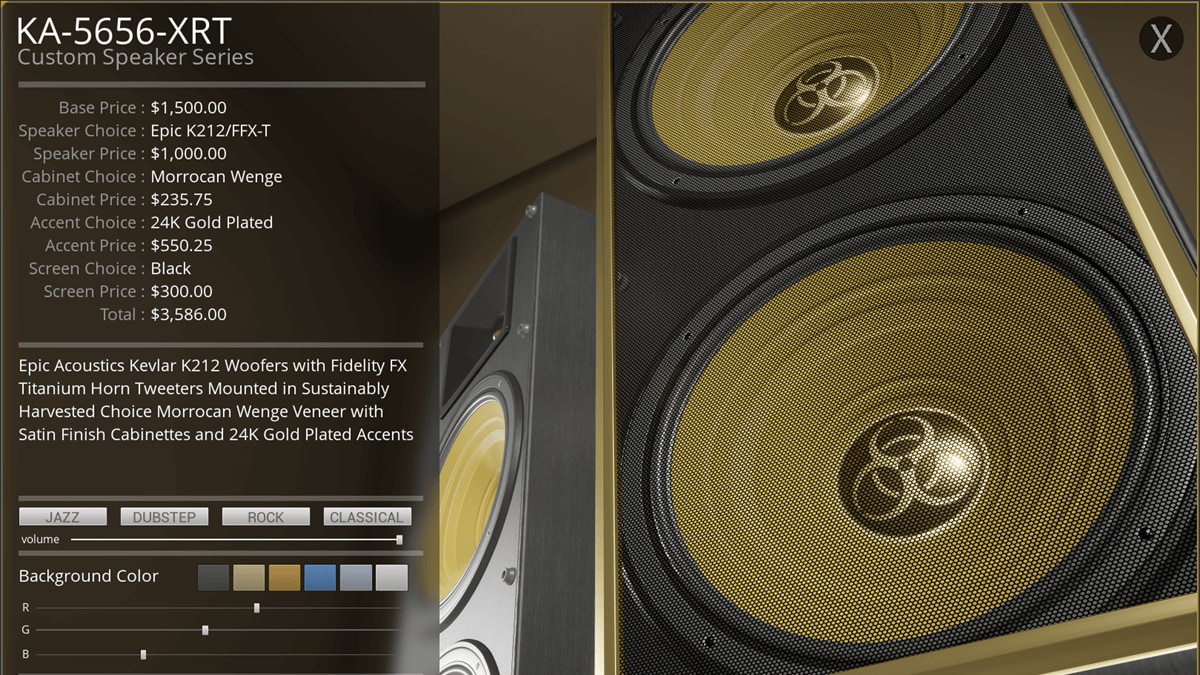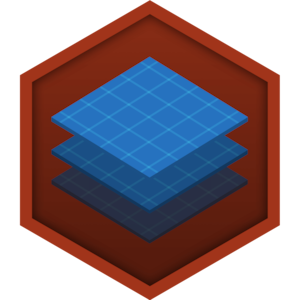Choose your operating system:
Windows
macOS
Linux
If you are using a Widget Component to display UI that exists in 3D in your game world and you want to allow players to interact with that widget, the Widget Interaction component provides a way for that interaction to occur.
The Widget Interaction component performs a Raycast to see if it hits a Widget Component placed in the world and if it hits one, you can set up rules to determine how to interact with it. The interaction is performed by simulating a defined key press, for example if a Button can be clicked on with the Left Mouse Button, you could tell other forms of input to simulate a Left Mouse Button click (controller button press, motion controller trigger press, etc.).
For step-by-step examples, see Creating 3D Widget Interaction and Creating Virtual Keyboard Interactions .
Adding a Widget Interaction Component
Typically you will want to add the Widget Interaction component to your player Pawn or Character class from the Components Window .

Above, we add and attach it to a gun our character is carrying so that where the gun points, the Widget Interaction component points.
Widget Interaction Property Reference
Once you have added a Widget Interaction component, you can adjust several properties from the Details panel to define how it functions. Aside from common component properties like Transform , Rendering , or Sockets , the properties below are specifically used with the Widget Interaction Component.
|
Option |
Description |
|
|---|---|---|
|
Interaction |
||
|
Virtual User Index |
Represents the Virtual User Index. Widget Interaction Components operate by using this Virtual User Index which captures and handles focus states separately. Each Virtual User should be represented by a different Index to ensure that they will maintain separate capture and focus states. As each Widget Interaction component comes online, it informs Slate of the Virtual User Index it has been assigned and can send events as if it were a real Slate user. |
|
|
Pointer Index |
Each user's simulated Virtual Controller or Virtual Finger Tips should use a different Pointer Index. |
|
|
Interaction Distance |
The distance in game units the component should be able to interact with a widget component. |
|
|
Interaction Source |
Determines where we should project from and start the trace (World, Mouse, Center Screen or Custom). If you set this to Custom, you'll need to call
|
|
|
Enable Hit Testing |
Should the interaction component perform hit testing (Automatic or Custom) and attempt to simulate hover? If you were going to emulate a keyboard and the virtual keyboard is separate from the virtual pointer device, you should turn this option off and use a second interaction component for the pointer device. |
|
|
Debugging |
||
|
Show Debug |
Shows debugging lines and a hit sphere to help debug interaction. |
|
|
Debug Color |
Determines the color of the debug lines when Show Debug is enabled. |
|
|
Events |
||
|
On Hovered Widget Changed |
Called when the hovered Widget Component changes. The interaction component functions at the Slate level - so it's unable to report anything about what Widget is under the hit result. |
|
Widget Interaction Blueprint Node Reference
The Widget Interaction component can simulate different types of input methods (such as press, release or press + release) which you can find under the Interaction section in the Blueprint Context Menu. You can also get information such as the last "hit" position registered by the Widget Interaction component or if a Widget Component in the world is currently being hovered upon.

|
Node |
Description |
|---|---|
|
Get Hovered Widget Component |
Gets the currently hovered Widget Component. |
|
Get Last Hit Result |
Gets the last hit result generated by the component. Returns the custom hit result if that was set. |
|
Is Over Focusable Widget |
Returns true if a widget under the hit result is focusable. Slate widgets that return true for
|
|
Is Over Hit Test Visible Widget |
Returns true if a widget under the hit result has a visibility setting that makes it hit test visible. Slate widgets that return true for
|
|
Is Over Interactable Widget |
Returns true if a widget under the hit result is interactive. Slate widgets that return true for
|
|
Press and Release Key |
Performs both the press and release of a simulated keyboard key. |
|
Press Key |
Performs a press of a simulated keyboard key. Avoid using this for
|
|
Press Pointer Key |
Simulates pressing a key on the mouse/pointer. In most cases, the key supplied would be a mouse button, but any key can be used. Advanced use cases, such as sending other keys to signal widgets to take special actions, are supported. |
|
Release Key |
Releases a key as if it had been released from the keyboard. |
|
Release Pointer Key |
Simulates releasing a key on the mouse/pointer, similar to Press Pointer Key. In most cases, the key supplied would be a mouse button, but any key can be used. |
|
Scroll Wheel |
Sends a scroll wheel event to the widget under the last hit result. |
|
Send Key Char |
Transmits a list of characters to a widget by simulating an OnKeyChar event for each key listed in the string. |
|
Set Custom Hit Result |
Sets a custom hit result. This is only taken into account if the Interaction Source is set to Custom. |
The properties for the Widget Interaction component can also be reterived in the form of a getter or set via setter nodes.

